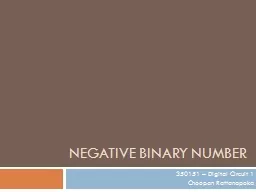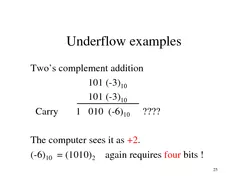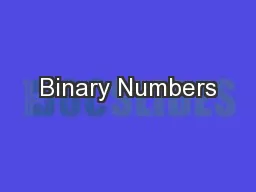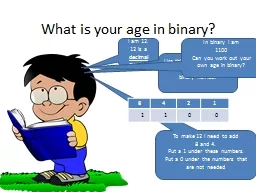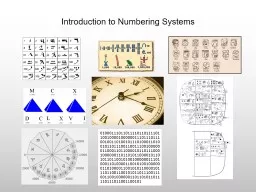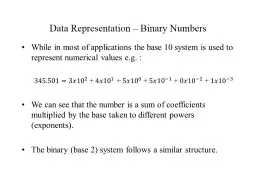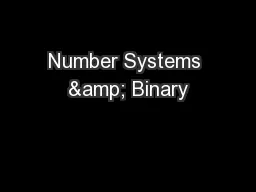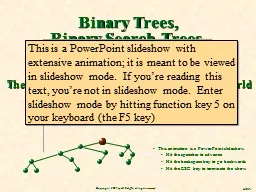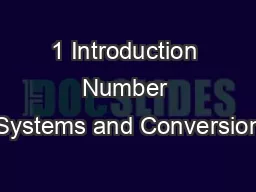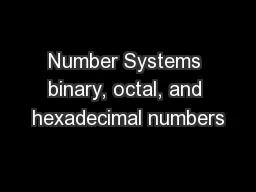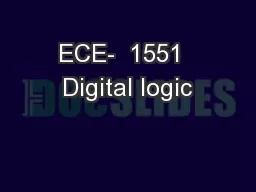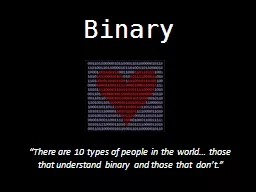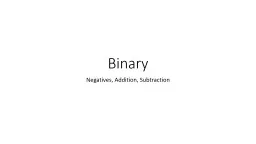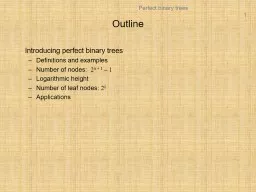PPT-Negative Binary Number
Author : jane-oiler | Published Date : 2015-11-11
350151 Digital Circuit 1 Choopan Rattanapoka Representing Negative Numbers in Binary Up to this point we have not been discussed how to represent negative numbers
Presentation Embed Code
Download Presentation
Download Presentation The PPT/PDF document "Negative Binary Number" is the property of its rightful owner. Permission is granted to download and print the materials on this website for personal, non-commercial use only, and to display it on your personal computer provided you do not modify the materials and that you retain all copyright notices contained in the materials. By downloading content from our website, you accept the terms of this agreement.
Negative Binary Number: Transcript
Download Rules Of Document
"Negative Binary Number"The content belongs to its owner. You may download and print it for personal use, without modification, and keep all copyright notices. By downloading, you agree to these terms.
Related Documents

